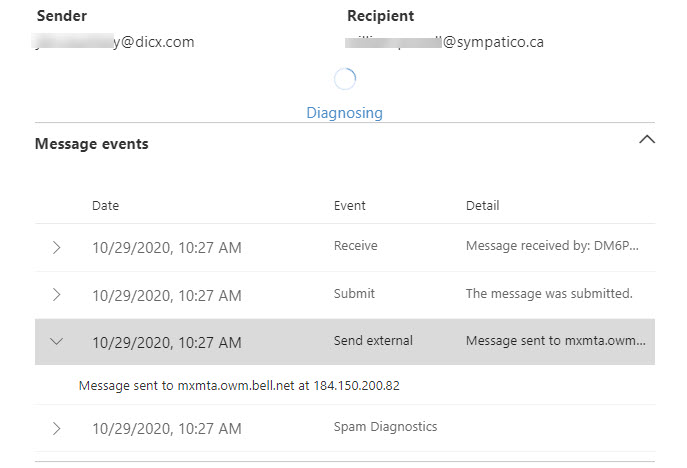@alento - I’d be interested to know if the mails were being sent to a Microsoft address and then forwarded on. I’ve had a look into this before and I don’t think that the situation has been changed at their end.
Microsoft do some weird things when they receive a mail. They validate via SPF and DKIM but then if you take the source of the mail from the inbox and run DKIM again, you find that the mail does not validate.
I’ve just sent a mail from my box to two addresses and then saved the mails from their respective mailboxes
Blueyonder -> bluetest.eml
Outlook -> outtest.eml
I have Anaconda and the DKIM module installed on my Windows desktop so I tested them both with the DKIMVerify command
>dkimverify < bluetest.eml
signature ok
>dkimverify < outtest.eml
signature verification failed
Bear in mind that this is not one mail sent twice, but the same mail.
If we look at the Outlook Authentication header:
Authentication-Results: spf=temperror (sender IP is 51.195.149.130)
smtp.mailfrom=timothydutton.co.uk; outlook.com; dkim=pass (signature was
verified) header.d=timothydutton.co.uk;outlook.com; dmarc=pass action=none
header.from=timothydutton.co.uk;compauth=pass reason=100
Not quite sure about the SPF temperror (although I have moved my box recently) but DKIM passed.
Somewhere between receiving my mail and putting it in my Inbox, Microsoft amended the mails MIME headers. While the appearance of the mail is not altered, this breaks DKIM. So it looks as if when applying the auto forward, Microsoft send on the amended mail.
Forwarding already breaks SPF, but provided DKIM validated, this wasn’t an issue. With DKIM broken as well, DMARC fails.
Someone needs to put pressure on Microsoft to fix what they’ve broken.
